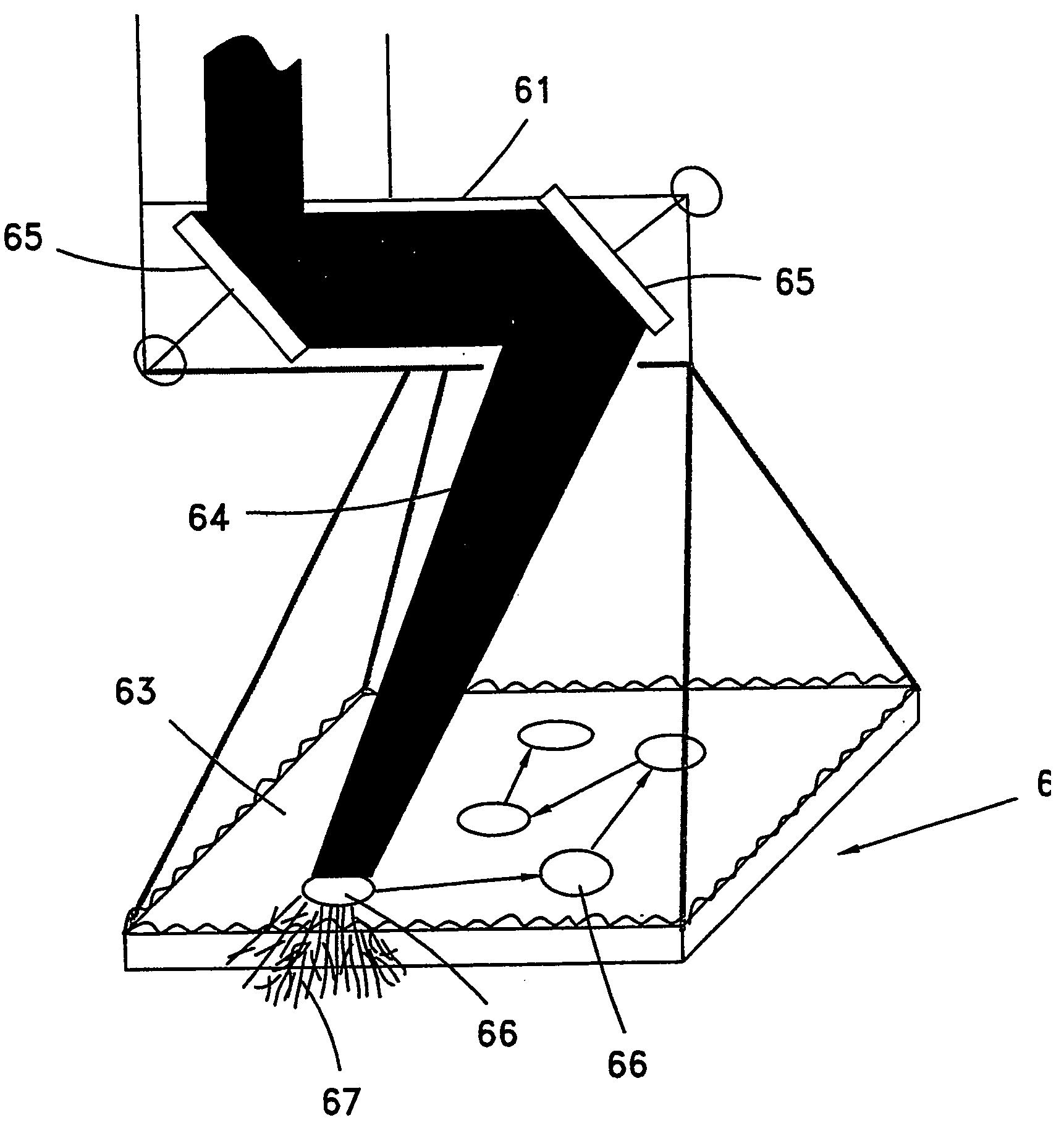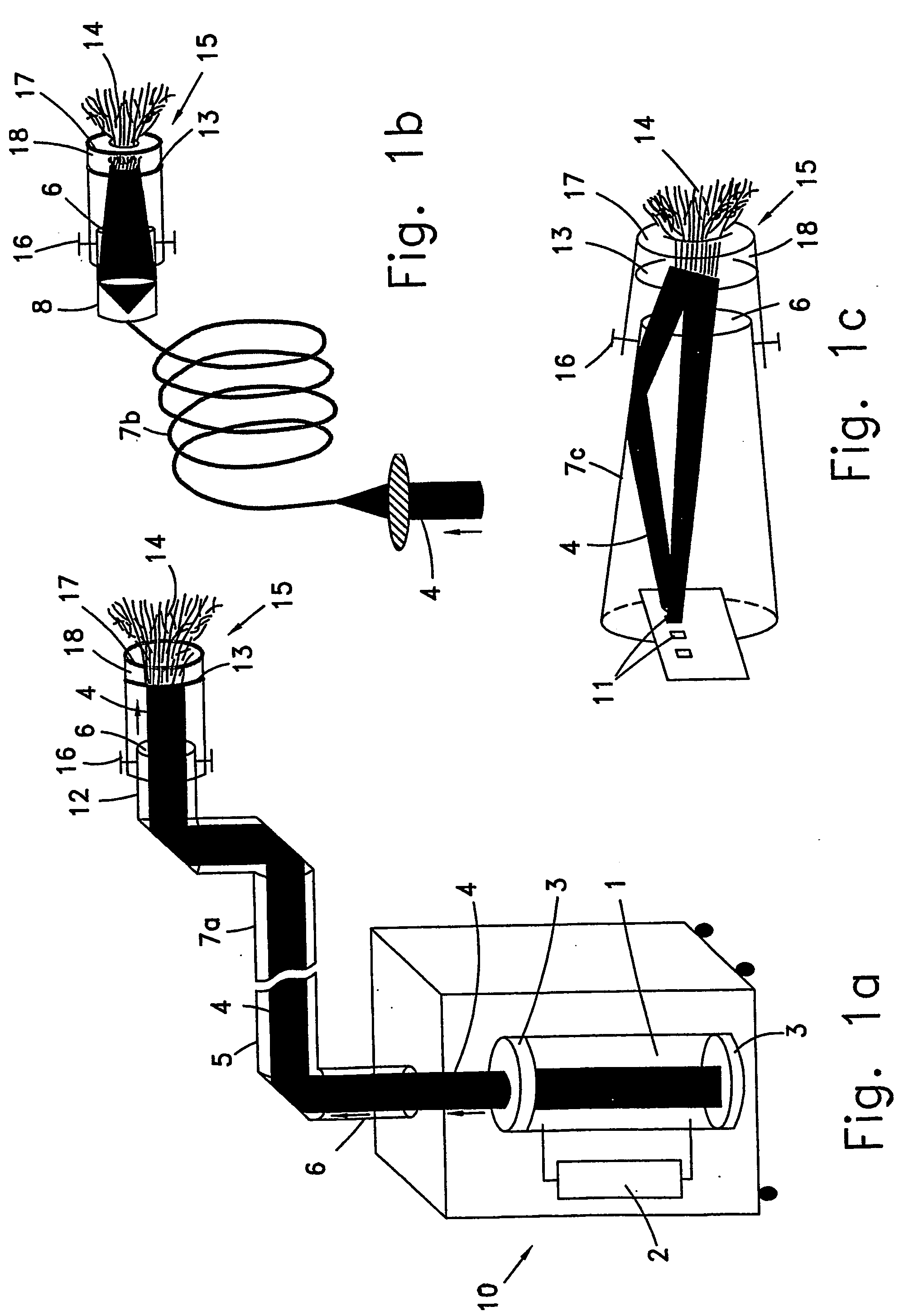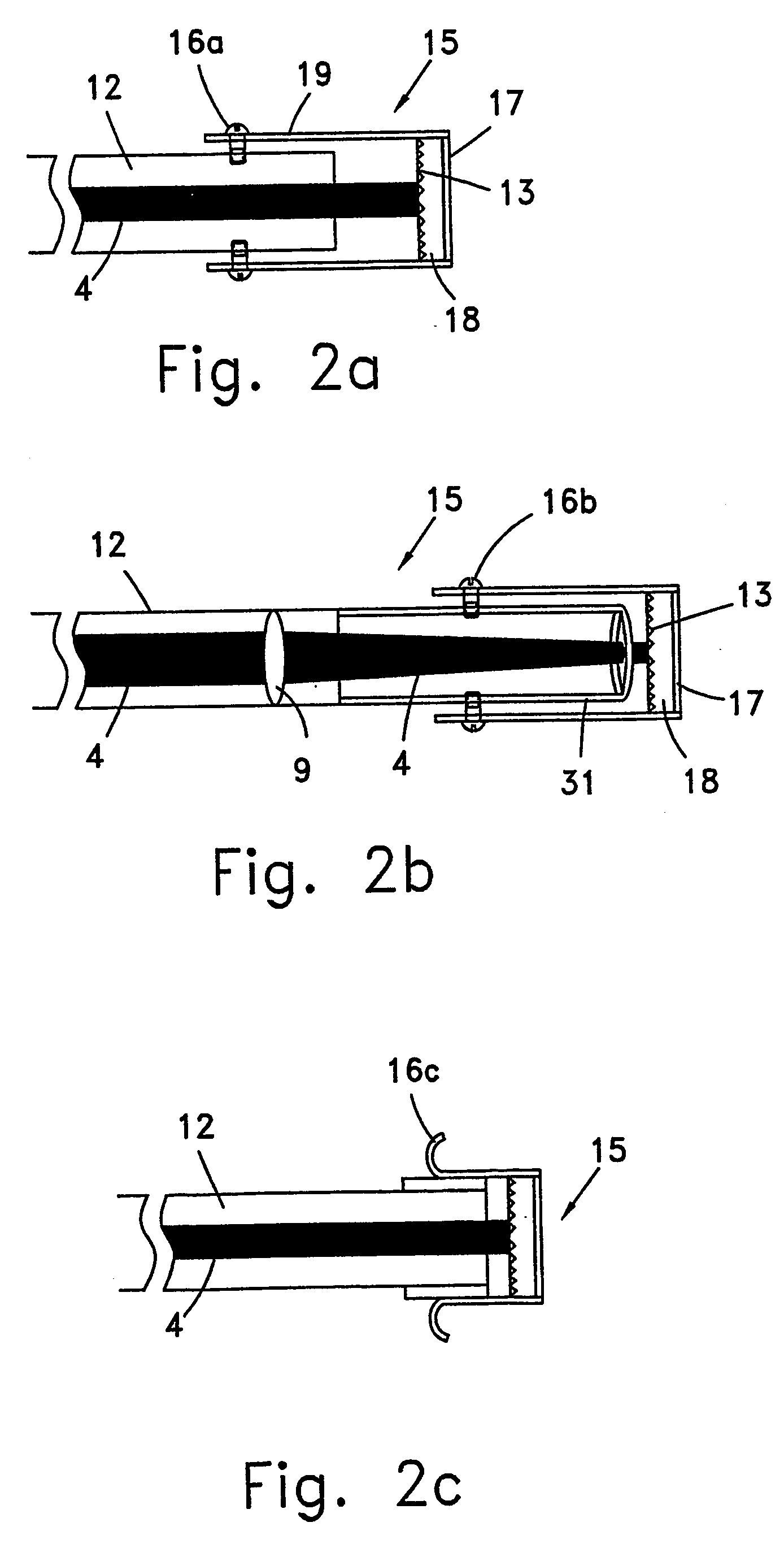Method and apparatus for improving safety during exposure to a monochromatic light source
a monochromatic light source and safety technology, applied in the field of laser-based light sources, can solve the problems of increasing the potential for eye damage, burning a small portion of the eye retina, and general consideration of laser systems as high-risk systems, and achieve the effect of improving the bodily safety of bystanders
- Summary
- Abstract
- Description
- Claims
- Application Information
AI Technical Summary
Benefits of technology
Problems solved by technology
Method used
Image
Examples
example 1
[0198] An experiment was performed to demonstrate the operating principles of the present invention in which transparent light diffusing adhesive “Magic Tape,” manufactured by 3M, having a thickness of 100 microns was attached to the distal end of an Alexandrite laser unit having a diameter of 8 mm. The energy level of the laser beam is 11 J / pulse. The laser beam was directed to the white (rear) side of a black developed photographic paper having a thickness of 300 microns. For comparison, the laser beam was also directed to the photographic paper without the use of the adhesive tape.
[0199] The ablation of the black paper after the beam had propagated and scattered through the white paper provides a visual simulation of the capability of the laser beam to penetrate transparent light-scattering skin in order to treat black hair follicles (or any other type of lesion) under the skin.
[0200] The energy of the laser beam transmitted through the adhesive tape, which caused the laser bea...
example 2
[0203] In a second experiment a long pulse Alexandrite laser unit having a wavelength of 755 nm, pulse duration of 40 msec, and having an energy density of 25 J / cm2 was used for hair removal. A diffusing unit with an ultra-densely woven polymer-based diffuser having a half angle of 15 degree produced by Barkan or a holographic diffuser produced by Physical Optics Corporation (USA) having a half angle of 40 degrees was employed. The diffusers were used in a one-time basis. Chilling gel was applied between the diffuser and the skin.
[0204] Each pulse of a laser beam scattered by a diffusing unit formed a spot of 5.5 mm on various skin locations including arms, bikini lines and armpits of 10 patients. Full hair removal was noticeable immediately after the firing of the laser beam. Each spot was compared to a control area with an identical diameter formed by an unscattered laser beam generated by the same laser unit with similar parameters, and similar results were achieved. Hair did no...
example 3
[0205] A long pulse Alexandrite laser unit having a wavelength of 755 nm, pulse duration of 40 msec, and having an energy level of 1-20 J is suitable for hair removal.
[0206] The diameter of the diffusing unit is 7 mm, and its scattering half angle is 60 degrees. A diffusing. unit comprising a diffuser with a small scattering angle, a highly divergent lens and a light guide is added to the distal end of the laser unit.
[0207] The prior art energy density of 10-50 J / cm2 is not significantly reduced with the employment of a diffusing unit. The laser unit operates at 25 J / cm2 and generates a radiance of 8 J / cm2 / sr. Since the acceptable radiance limit according to ANSI Z 136.1 is 4.3 J / cm2 / sr, bystanders are required to use protective eyeglasses with 50% optical attenuation, an attenuation similar to that of sunglasses and an order of 100,000 less than typical protective eyeglasses worn during operation of a laser unit. For a larger target area, a scanner such as the Epitouch model manu...
PUM
 Login to View More
Login to View More Abstract
Description
Claims
Application Information
 Login to View More
Login to View More - R&D
- Intellectual Property
- Life Sciences
- Materials
- Tech Scout
- Unparalleled Data Quality
- Higher Quality Content
- 60% Fewer Hallucinations
Browse by: Latest US Patents, China's latest patents, Technical Efficacy Thesaurus, Application Domain, Technology Topic, Popular Technical Reports.
© 2025 PatSnap. All rights reserved.Legal|Privacy policy|Modern Slavery Act Transparency Statement|Sitemap|About US| Contact US: help@patsnap.com



